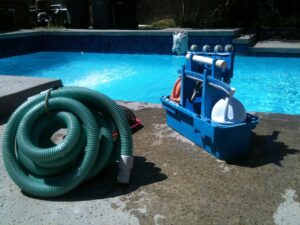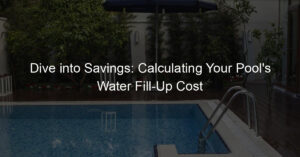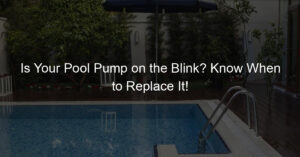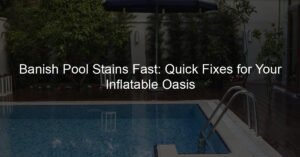Understanding the Need for a Pool Vacuum
A pool vacuum is an essential tool for maintaining the cleanliness and clarity of your swimming pool. It helps to remove debris, leaves, and dirt that accumulate at the bottom and sides of your pool. Left unchecked, this buildup can lead to cloudiness, discoloration, and even the growth of algae and harmful bacteria. Moreover, consistent vacuuming helps maintain the chemical balance of your pool, extending the longevity of its liners and filters. Understanding the need for a pool vacuum sets the tone for proper maintenance and preservation of your swimming space.
Prepping Your Pool for Vacuuming
Before you begin vacuuming, it’s crucial to prepare your pool for the task. This process includes brushing the walls and the floor to loosen any debris or algae stuck to the surfaces. You should also skim the surface of the water to remove leaves, bugs, or other floating debris. Adjust your pool’s chemistry if necessary and ensure the water level is sufficient. This process will make the vacuuming process more effective and ensure that you are not merely recirculating debris.
Components of a Pool Vacuum: An Overview
A pool vacuum typically consists of a vacuum head, a telescopic pole, and a vacuum hose. The vacuum head is the part that physically contacts the bottom of the pool and dislodges dirt and debris. It comes in various designs tailored to different types of pool surfaces. The telescopic pole is used to maneuver the vacuum head around the pool, and its length can be adjusted to reach different areas. The vacuum hose is crucial for transporting the dislodged debris from the pool bottom to the pool’s filtration system.
Step-by-Step: Assembling Your Pool Vacuum
The assembly process of a pool vacuum is straightforward. Firstly, connect the vacuum head to the telescopic pole. Ensure the connection is secure, as the head will need to withstand the pressure of vacuuming. Once you’ve done that, attach one end of the vacuum hose to the head. Some hoses may have a swivel end, which should be connected to the vacuum head to avoid tangling during the process. It’s important to verify all connections are tight to avoid air entering the system, which could potentially disrupt the vacuuming process.
Importance of a Pool Skimmer and How It Works
A pool skimmer plays an important role in vacuuming your pool. It’s designed to remove debris from the surface before it sinks to the bottom. The skimmer is also where you connect the pool vacuum. The skimmer has a basket that collects the debris, preventing it from reaching the pump and filter. When you’re vacuuming, the water flow carries the dislodged debris through the vacuum hose and into the skimmer basket. From here, the clean water is returned to the pool while the debris remains trapped in the skimmer basket.

Connecting the Pool Vacuum to the Skimmer
To connect the pool vacuum to the skimmer, firstly ensure that the skimmer basket is clean and free of debris. You can then remove the basket and insert the vacuum adapter. One end of the vacuum hose is connected to the vacuum head and the other end is then connected to the adapter in the skimmer. Ensure all connections are snug to prevent air leaks, which can disrupt the vacuum’s suction capability.
Using the Hose: Connection and Priming
Priming the vacuum hose is a critical step in the pool vacuuming process. This involves filling the hose with water to displace all the air. You can do this by holding the free end of the hose in front of a pool return jet until water comes out of the other end. Alternatively, you can submerge the hose in the pool and fill it manually. Once the hose is filled with water, without allowing air to re-enter, connect it quickly to the skimmer adapter. This primes the system and allows for effective vacuuming.
Ensuring the Right Hose Length for Your Pool
The length of your pool vacuum hose is an important consideration. It should be long enough to reach from the skimmer to the furthest point in the pool, plus a bit extra to accommodate movements during vacuuming. Having a hose that’s too short will limit the areas you can reach, while a hose that’s too long can become cumbersome and lead to tangling. As such, you may need to adjust the hose length depending on the size and shape of your pool.
Positioning the Vacuum Head Correctly: Tips and Techniques
Positioning the vacuum head correctly will ensure efficient cleaning. The vacuum head should lay flat on the pool bottom and maintain consistent contact with the surface. Start from the shallow end and gradually proceed towards the deep end, keeping the head underwater at all times to prevent air from entering the system. The vacuum should be moved slowly and steadily, overlapping slightly on each pass to ensure no areas are missed. Fast movements can stir up debris, reducing the effectiveness of the vacuuming process.

Verifying Your Vacuum Setup: Things to Check
Before you start vacuuming, it’s important to verify your setup. Check the connections between the vacuum head, pole, and hose, and make sure they’re secure. Ensure the skimmer basket is removed, the vacuum adapter is properly installed, and the hose is connected. Also, ensure the hose is primed with no air inside. If your pool has multiple skimmers, close off the other ones so all suction is directed to the skimmer you’re using for vacuuming. Lastly, inspect the pump basket and the pool filter to ensure they are clean and working properly.
The Art of Maneuvering Your Pool Vacuum
Maneuvering your pool vacuum effectively is key to efficient cleaning. The vacuum should be moved in slow, even strokes to ensure all debris is picked up. Starting at the shallow end, vacuum in a pattern similar to mowing a lawn, overlapping your previous path slightly with each new stroke. Avoid rapid movements, which can stir up debris and cloud the water, making it difficult to see what you’re doing. If your pool has stairs or seats, use a brush to dislodge the debris and then vacuum the loose material.
Routine and Maintenance: Cleaning Your Pool Regularly
Regular vacuuming is a crucial aspect of pool maintenance. The frequency depends on factors such as the amount of debris your pool collects and how often the pool is used. Generally, a pool should be vacuumed at least once a week. Regular vacuuming not only helps maintain the cleanliness of the pool but also reduces strain on the pool’s filter system. Additionally, it is vital to clean and maintain the vacuum apparatus itself, including regular checks and replacement of worn-out components.
Troubleshooting Common Issues with Pool Vacuums
There are a few common issues that you might encounter when vacuuming your pool. If the vacuum loses suction, it might be due to a blockage in the hose or skimmer basket, or air might have entered the system. Check the hose for obstructions and ensure the skimmer basket is clean. If air gets into the hose, you’ll need to re-prime it. Other potential problems include a vacuum head that doesn’t stick to the bottom (which might indicate a need for more suction) or a vacuum that moves too slowly (which might indicate too much suction). Always refer to the manufacturer’s guidelines when troubleshooting your pool vacuum.
Top Tips to Improve Vacuuming Efficiency
To improve vacuuming efficiency, ensure that your pool’s water level is correct – it should not be too high or too low. The pool’s chemistry should also be balanced to prevent algae growth and debris buildup. Always prime the vacuum hose to ensure there’s no air inside, and remember to clean the skimmer basket before and after vacuuming. Use slow, steady movements to prevent debris from being stirred up, and vacuum regularly to maintain the cleanliness of your pool.
The Role of Pool Chemistry in Vacuuming
Balancing your pool’s chemistry is important for effective vacuuming. An imbalanced pool can lead to issues such as algae growth and cloudy water, which can make vacuuming more difficult. Regularly test and adjust your pool’s pH, alkalinity, and sanitizer levels. High calcium hardness can lead to scaling on the pool surfaces and clog your vacuum system. On the other hand, low calcium hardness can corrode your pool surfaces, creating more debris for the vacuum to handle.
Safeguarding Your Pool Vacuum: Care and Storage
To prolong the lifespan of your pool vacuum, always rinse the components with fresh water after use to remove any chlorine or other chemicals. Dry them thoroughly before storage to prevent rust and deterioration. The vacuum hose should be stored straight or coiled loosely to avoid kinks and cracks. If possible, store your vacuum equipment indoors or in a shaded area to protect them from weather damage. Regularly inspect the equipment for any signs of wear and tear, and replace parts as necessary.
Manual vs Automatic Pool Vacuums: A Comparison
There are two types of pool vacuums – manual and automatic. Manual vacuums are more labor-intensive as they require you to physically move the vacuum around the pool. They’re also typically cheaper and allow for more control over which areas are cleaned. On the other hand, automatic vacuums do the work for you, either using suction, pressure, or robotic mechanisms. While they’re more expensive, they can save time and labor, and some models can scrub the pool surfaces as well as vacuuming.

Investing in the Right Pool Vacuum: Key Considerations
Choosing the right pool vacuum depends on your specific needs and circumstances. Consider factors such as the size and shape of your pool, the type and amount of debris it collects, your budget, and how much time you’re willing to spend on pool maintenance. Manual vacuums are suitable for smaller pools or if you prefer hands-on maintenance, while automatic vacuums might be more suitable for larger pools or if you prefer a set-and-forget approach.
Professional Assistance: When to Call an Expert
While most pool owners can manage regular vacuuming, sometimes professional assistance might be needed. This could be due to persistent issues such as recurring algae growth, stubborn stains, or problems with the pool equipment that you’re unable to troubleshoot yourself. A pool professional can also provide valuable advice on maintaining your pool and your vacuum system. They can also perform a thorough cleaning and service of your pool and equipment.
Making Pool Vacuuming a Hassle-Free Task: Conclusion and Final Thoughts
In conclusion, pool vacuuming doesn’t have to be a daunting task. With the right knowledge, tools, and techniques, it can become a straightforward part of your pool maintenance routine. Remember, regular vacuuming is key to maintaining a clean, healthy pool. It’s not just about aesthetics – it’s also about the health and safety of those who use the pool. Happy vacuuming!
| Step Number | Description |
|---|---|
| 1 | Assemble your pool vacuum: Attach the vacuum head to the telescopic pole and the vacuum hose to the vacuum head. |
| 2 | Prepare your pool for vacuuming: Brush the walls and floor, skim the water surface, and adjust the pool’s chemistry and water level if necessary. |
| 3 | Ensure the skimmer basket is clean and free of debris. Remove the skimmer basket. |
| 4 | Insert the vacuum adapter into the skimmer. |
| 5 | Prime the vacuum hose: Submerge the hose in the pool and fill it with water to remove all the air. |
| 6 | Without allowing air to re-enter, quickly connect the vacuum hose to the adapter in the skimmer. |
| 7 | Verify all connections are secure and the system is primed. |
| 8 | Begin vacuuming your pool: Start at the shallow end and move slowly and steadily towards the deep end. |
| 9 | Regularly check the skimmer basket and clean it out as needed during the vacuuming process. |
| 10 | After vacuuming, disconnect the hose from the skimmer, remove the vacuum head from the pool, and drain the hose. |
| 11 | Rinse the vacuum components with fresh water and dry them thoroughly before storage. |
Please note that specific procedures may vary depending on the type of pool and vacuum system you have. Always refer to the manufacturer’s instructions.

Conclusion
Maintaining a sparkling clean and healthy pool environment is a primary concern for all pool owners. Understanding how to effectively use a pool vacuum plays a pivotal role in this process. From understanding its components to learning how to assemble and maneuver it, using a pool vacuum can be straightforward and efficient.
This guide has shed light on every critical aspect of using a pool vacuum, including preparation, assembly, connection, maneuvering techniques, regular maintenance, troubleshooting, and even when to consider professional help. It also highlighted the importance of choosing the right type of vacuum and regular care to ensure its longevity.
The key takeaway is that with regular and correct vacuuming, you can maintain the cleanliness, safety, and longevity of your pool. Whether it’s a refreshing dip on a hot summer day or an invigorating swim in the cooler months, your well-maintained pool is always ready to offer the perfect swimming experience.
Remember, like all maintenance routines, pool vacuuming is not just a one-off task, but a regular commitment. With the right knowledge, tools, and a bit of time, pool vacuuming can be a hassle-free and satisfying task that contributes significantly to the overall pleasure of owning a swimming pool.














